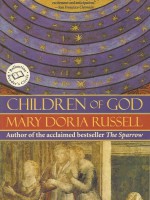 Summary: A 14 year old boy tries to escape his destiny.
Summary: A 14 year old boy tries to escape his destiny.
One of my reading goals this year is to read all of Flannery O’Connor fiction, which is completely possible because there are only two novels and two short story collections. The Violent Bear It Away is the second novel. On the whole I liked it more than Wise Blood, but I am not completely sure why. My most clear impression of the book is that I have missed a lot of it because I am sure I have not understood some of the references and subtler meanings. It will be going on the “˜to read again’ pile.
Tarwater, a 14 year old boy, who has been raised by his great uncle after his mother died in a car accident, is suddenly alone in the world. After his great uncle dies, he leaves his cabin in the woods and goes to town with his secular Uncle Rayber and his son Bishop.
One of the Goodreads reviews I read commented that none of the characters are likable, but I disagree with that assessment. It is hard to like the characters, but I did not dislike any of them. Instead, it was easy to see the hurt in all of the characters. I could not think of the surly 14 year old, or Rayber, who had been abandoned by his wife with a disabled (probably Downs Syndrome) boy, without having sympathy for their hurt. They make bad decisions and harm one another, but the harm is harm borne by trauma and from generational sin.

 Summary: Based on a series of lecture about how our understanding of our personal testimonies impacts the way we understand Christian Faith.
Summary: Based on a series of lecture about how our understanding of our personal testimonies impacts the way we understand Christian Faith.

 Summary: Enneagram as a method of spiritual growth.
Summary: Enneagram as a method of spiritual growth. Summary: A discussion of spiritual attacks, sin, prevention of sin, forgiveness, repentance and restoration.
Summary: A discussion of spiritual attacks, sin, prevention of sin, forgiveness, repentance and restoration. Summary: What it means to be a Black Woman in middle-class White America, even within the church.
Summary: What it means to be a Black Woman in middle-class White America, even within the church.